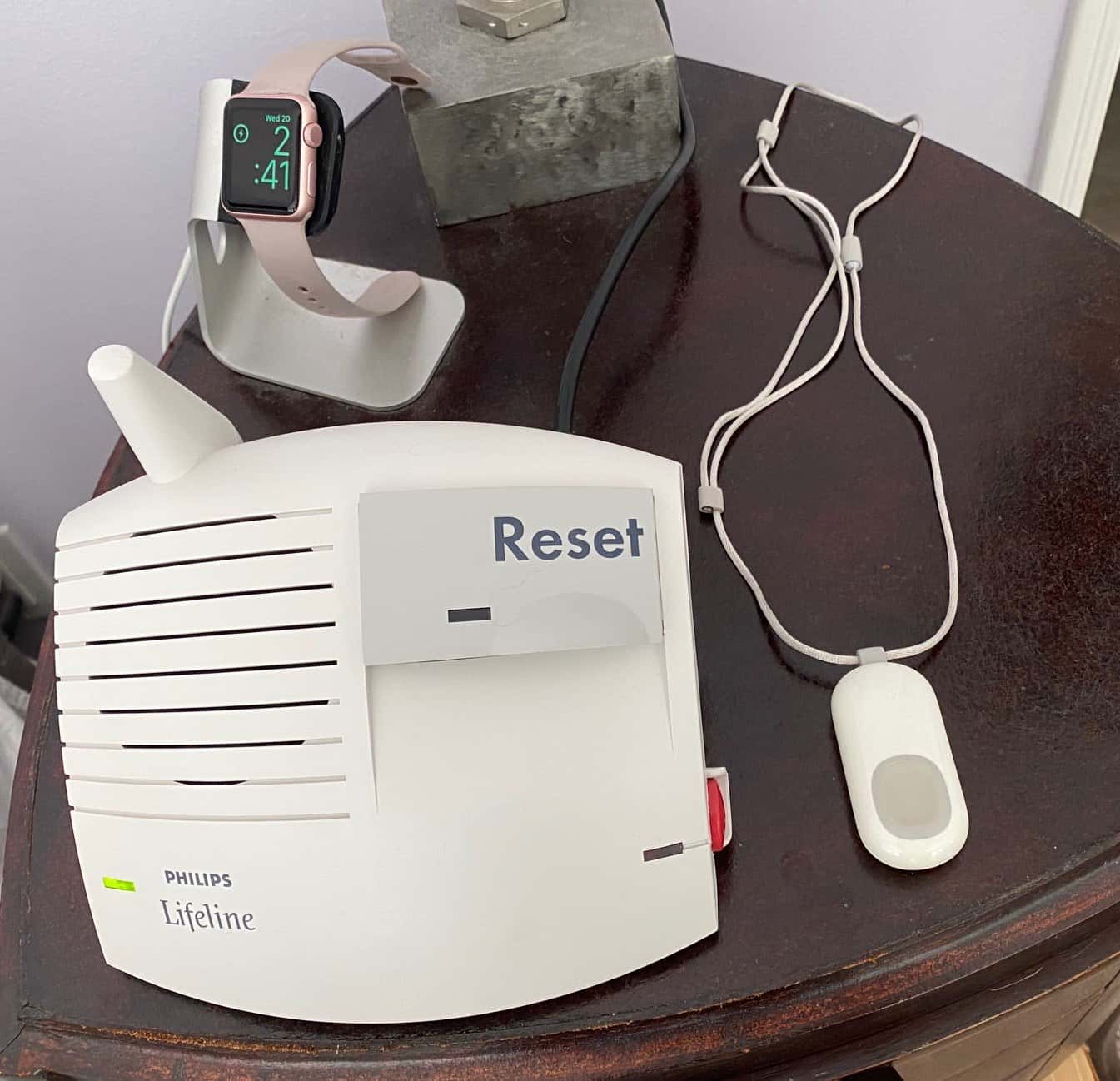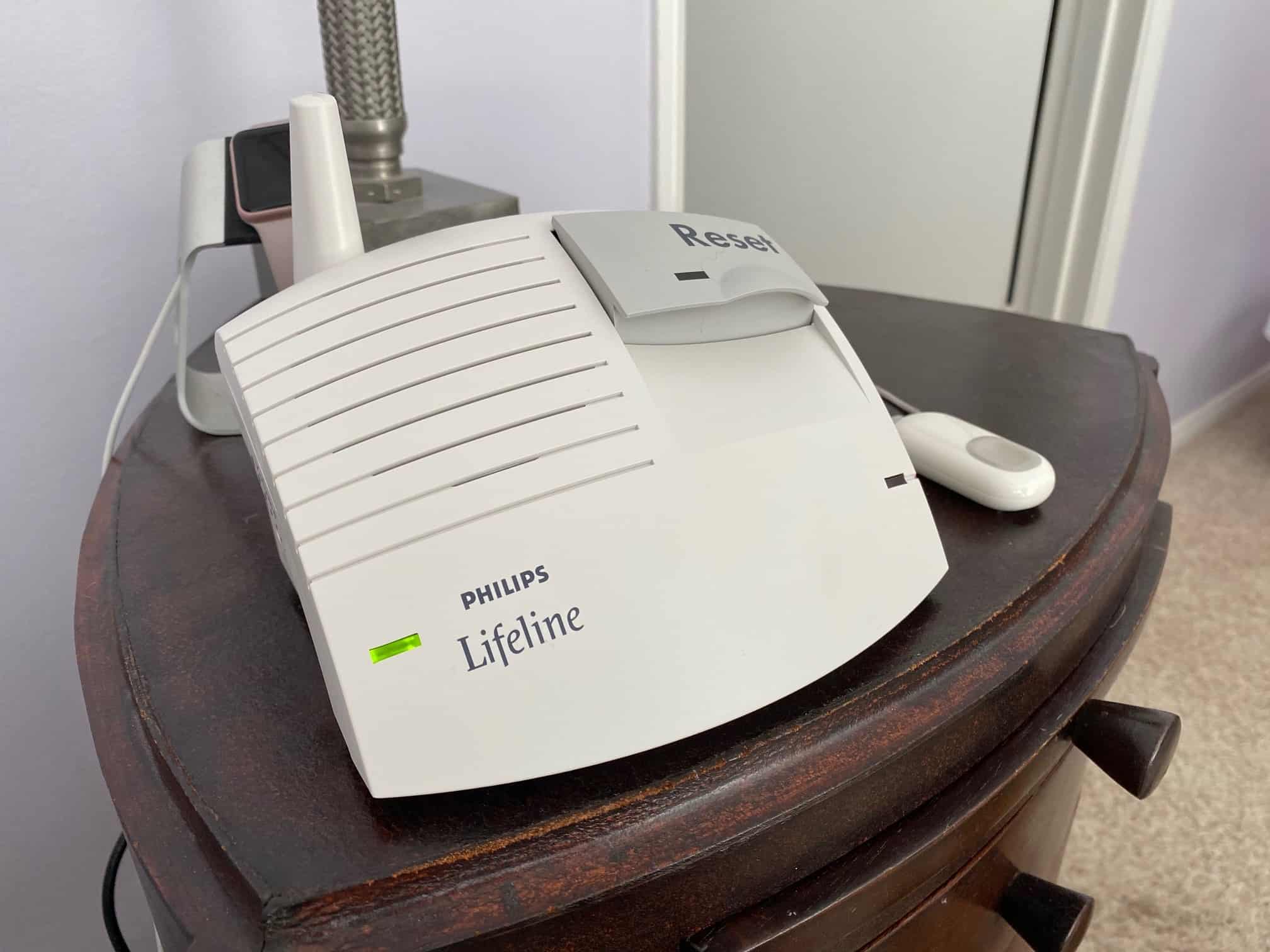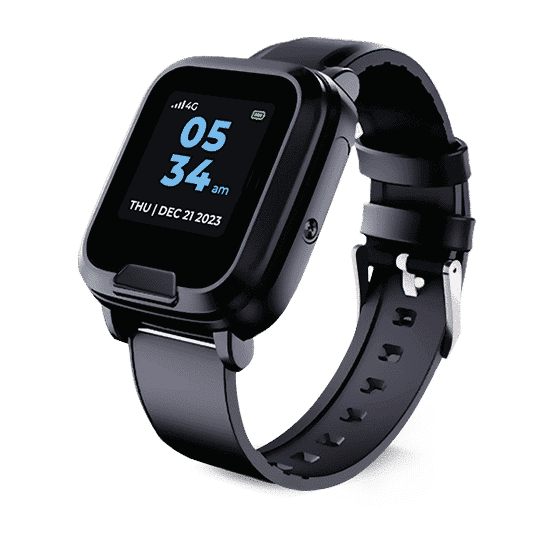Lifeline Medical Alert Systems: Pricing and Value in 2024
Lifeline offers simple systems for at-home and on-the-go use starting at $29.95 per month.
SeniorLiving.org is supported by commissions from providers listed on our site. Read our Editorial Guidelines
SeniorLiving.org is supported by commissions from providers listed on our site. Read our Editorial Guidelines
As the first company to offer medical alert systems in America, Lifeline has over 50 years of experience protecting older adults and providing peace of mind to their families. The company currently has three medical alert systems: HomeSafe (which comes in a cellular and landline model), the On the Go mobile system, and a smartwatch. Starting at a monthly cost of $29.95 per month, you’ll find that Lifeline’s at-home and on-the-go plans are typically $2 to $10 more expensive than the competition, including Bay Alarm Medical’s prices and Medical Alert's monthly rates.
However, in our Lifeline review, we found the extra costs to be well worth it, as their systems are user-friendly, simple, and offer reliable protection without unnecessary bells and whistles. We’ll cover everything you need to know about Lifeline below, from pricing and value to finding the best deals.

Lifeline equipment
Lifeline at a Glance
✔ Waterproof, wearable pendants
✔ Well-known medical alert system provider
✔ Two-way voice communication
✔ Landline and cellular options
✔ AT&T cellular connectivity
✔ Month-to-month options
✔ 24/7 monitoring with all packages
✔ Lifeline Cares mobile app
✔ Fall detection available
The Best Affordable Alternatives to Lifeline
With decades of trusted service and extra features like the Lifeline Cares mobile app, Lifeline is a great choice for older adults in need of a medical alert system. That said, there are several other providers with lower monthly rates and higher-tech systems. Check out some of our picks for the best medical alert systems that we have reviewed.
The Fast Facts: Lifeline Equipment and Pricing
At first glance at the chart below, you probably noticed that Lifeline tacks on many extra fees for activation, equipment, shipping, and installation. But here’s the good news: If you give Lifeline a call, the representatives may waive some of these fees (typically shipping and activation).
| Lifeline product | Monthly price | Fall detection | Shipping and setup fees |
|---|---|---|---|
| HomeSafe | Landline: $29.95 Cellular: $39.95 |
$15 per month | Shipping: $29.95 Setup: $99.95 |
| On the Go | Standard: $44.95 Mini: $49.95 (Cellular only) |
$15 per month | Shipping: $29.95 Setup: $99.95 |
| Smartwatch | $39.95 | $15 per month | Shipping: $29.95 Installation: $99 (optional) Device fee: $159 |
A Closer Look at Lifeline Systems and Value

Lifeline HomeSafe system
HomeSafe
HomeSafe is Lifeline’s lowest-priced option, starting at $29.95 on a month-to-month plan for the landline model. It costs the same as entry-level LifeFone systems and less than LifeStation models, so it’s fairly priced for the industry.
The system comes in both a landline and cellular model. Since the cellular option costs $39.95 per month, we’d recommend going with the landline model to save $10 every month, as the cellular system doesn’t add much extra value.
You can also add fall detection to the system for $15 per month. This is on the pricier side, as fall detection from other companies is around $5 cheaper per month. To compare a few more affordable fall detection options, head to our latest ADT Health review and Medical Guardian review.
Did You Know? All Lifeline systems come with access to the Lifeline Cares mobile app at no extra cost. This app lets family members and caregivers monitor the status of the user’s devices, create a personalized care plan for emergencies, and share notes and information with other family members.
On the Go
If you want a device that offers protection anywhere you go, On the Go is a great option. This system comes in a standard and mini version for those who want more discreet protection. Priced between $44.95 and $49.95 per month, it’s up to $10 more than the cellular HomeSafe system. Unlike the HomeSafe models, On the Go is an all-in-one wearable system that you can use both on the go and in the house, so it comes with more versatility at a better price.
As long as you’re in an area with reliable AT&T service, you’re set.1 On the Go has location-tracking technology, and you can add fall detection for $15 per month. The pendant, which can be worn as a necklace, also comes with a built-in two-way speaker and a help button for quick and easy communication.

Editor Jeff Hoyt testing On the Go
For those who frequently spend time outside the home, this is the system we’d recommend if you’re set on Lifeline. However, if you're on a tight budget, there are more affordable mobile systems to consider. Companies we've reviewed, like Bay Alarm Medical and MobileHelp, offer similar on-the-go systems for around $5 to $15 cheaper per month; however, keep in mind that other mobile systems might not be all-in-one systems or as lightweight as Lifeline’s On the Go.
Smartwatch

Lifeline Smartwatch
Lifeline’s newest system, the Smartwatch, costs $39.95 per month, plus a $159 device fee. Subscribers can save a few bucks per month by paying annually or quarterly. If you’re looking for a more high-tech, sleek system, this is our top pick. It looks just like a standard smartwatch, so no one will know you’re wearing a medical alert system. Plus, it has features like step tracking and heart monitoring to help you stay on top of your health.
Add-On Accessories: Pricing and Features
Compared to other companies like Bay Alarm Medical, Lifeline doesn’t offer many accessories. The only add-ons are a lockbox and a protection plan, priced at $2.95 per month and $6.95 per month, respectively. The key lockbox gives first responders access to your home in the event of an emergency. Having a lockbox in place could save you costly fees; first responders won’t have to damage your door to reach you during an emergency. We wish Lifeline offered more add-on equipment, but it’s perfect for those who just want to keep things simple.
Compare Lifeline to Other Providers
How to Get the Best Deal With Lifeline
Lifeline runs deals throughout the year to help you save. Some deals might not be advertised online, so be sure to call Lifeline’s customer support line to ask a representative about any ongoing promotions or current deals.
You can do a few other things to get the best value and save the most money on your Lifeline service. These include:
- Order your system over the phone: As we’ve mentioned, Lifeline adds several extra fees and upfront costs to start your service. While this is pretty standard with most companies, you can typically get a few of those fees waived if you call to speak with a representative. If you skip this step and go straight to ordering online, you’ll likely be stuck paying the fees.
- Choose self-installation: Medical alert systems are designed to be simple to set up and use, and Lifeline does a great job of ensuring that the setup process for all of their alert systems does just that. While the company offers a professional installation option for $99, there’s typically no need for it. Every package comes with a detailed instruction manual, and customer service can answer any additional questions you may have during setup.
- Go with a landline option for in-home systems: For the HomeSafe system, you can save $10 per month by choosing the landline option instead of cellular. If you have a landline, the connection will be just as, if not more, reliable than the cellular system. The main advantage of the cellular system is that it doesn’t need to be plugged into a phone jack, so you have more freedom about where to set it up. If that flexibility is worth the extra $10 to you, you’ll want to choose the cellular system.
Is Lifeline Right for Me?
Now that you know more about Lifeline, you might wonder, “Do I need a medical alert system?” Let’s take a look at the stats. According to the National Council on Aging, 1 in 4 American adults over the age of 65 suffer from a fall every year, and falls are the leading cause of both fatal injuries and non-fatal trauma-related hospital admissions for seniors.2
Having a medical alert system that lets you call for help with the press of a button could save your life. Maybe you’re thinking, “But I have a cell phone and a landline, so I could just call 911.” While that’s great, 80 percent of falls happen in the bathroom,3 where you’re far less likely to be able to reach the phone. Fortunately, all help buttons from Lifeline’s medical alert systems are waterproof, so you can call for help, even if you fall in the shower.
Final Thoughts on Pricing and Value for Lifeline
If you’re looking for a medical alert company with decades of experience, Lifeline is a great option. There’s an added level of reassurance knowing that the company has been serving seniors and their families for nearly 50 years. Plus, their parent company, Philips, is an industry leader in several areas of health technology.
Lifeline’s systems are on the pricier end compared to other companies in the industry. Still, the reliable technology, fall detection options, and user-friendly equipment make the price worth it. Plus, they offer a companion mobile app called Lifeline Cares that lets family members and caregivers check the status of the user’s devices and share notes with other loved ones. Overall, Lifeline systems are simple and reliable, so if you want a system that doesn’t overcomplicate things, they’re a solid choice.
Frequently Asked Questions About Lifeline
-
How much does Lifeline cost per month?
Depending on the package you choose, Lifeline can cost anywhere from $29.95 per month to $49.95 per month.
-
How does Lifeline work?
Lifeline operates multiple 24/7 operating centers that can send help to users at any time. All the subscriber has to do is press the help button on their base station or wearable pendant, and they’re automatically connected to the monitoring center. Depending on the type of emergency, the live operator will send the appropriate help to your exact location.
-
Does Lifeline need a landline?
Lifeline offers both landline and cellular systems, so you don’t need a landline to have a Lifeline system. You’ll have your choice between a landline or cellular connection, so you can go with the system that best fits your needs.
-
Does Lifeline have long-term contracts?
No, Lifeline doesn’t have long-term contracts. All systems are paid for on a month-to-month basis, so you can cancel your service at any time without penalty.
AT&T. (2020). Wireless coverage map.
National Council on Aging. (2022). Get the Facts on Falls Prevention.
Aging.com. (2020). Falls are, Unfortunately, A Common Occurrence.






